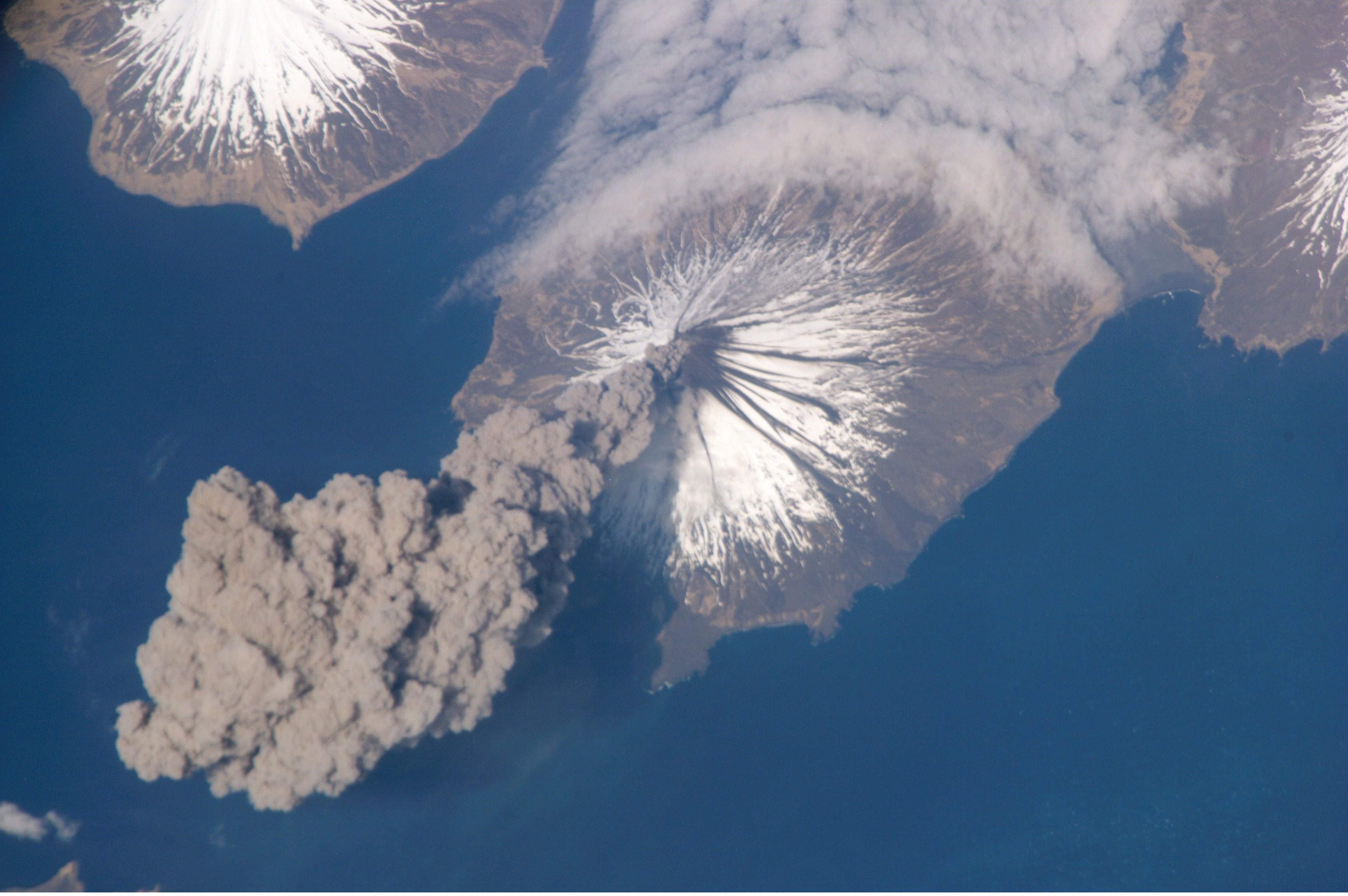A volcano is an impressive sight. When they are dormant, they loom large over everything on the landscape. When they are active, they are a destructive force of nature that is without equal, raining fire and ash down on everything in site. And during the long periods when they are not erupting, they can also be rather beneficial to the surrounding environment.
But just what causes volcanoes? When it comes to our planet, they are the result of active geological forces that have shaped the surface of the Earth over the course of billions of years. And interestingly enough, there are plenty of examples of volcanoes on other bodies within our Solar System as well, some of which put those on Earth to shame!
Definition:
By definition, a volcano is a rupture in the Earth’s (or another celestial body’s) crust that allows hot lava, volcanic ash, and gases to escape from a magma chamber located beneath the surface. The term is derived from Vulcano, a volcanically-active island located of the coast of Italy who’s name in turn comes from the Roman god of fire (Vulcan).

On Earth, volcanoes are the result of the action between the major tectonic plates. These sections of the Earth’s crust are rigid, but sit atop the relatively viscous upper mantle. The hot molten rock, known as magma, is forced up to the surface – where it becomes lava. In short, volcanoes are found where tectonic plates are diverging or converging – such as the Mid-Atlantic Ridge or the Pacific Ring of Fire – which causes magma to be forced to the surface.
Volcanoes can also form where there is stretching and thinning of the crust’s interior plates, such as in the the East African Rift and the Rio Grande Rift in North America. Volcanism can also occur away from plate boundaries, where upwelling magma is forced up into brittle sections of the crust, forming volcanic islands – such as the Hawaiian islands.
Erupting volcanoes pose many hazards, and not just to the surrounding countryside. In their immediate vicinity, hot, flowing lava can cause extensive damage to the environment, property, and endanger lives. However, volcanic ash can cause far-reaching damage, raining sulfuric acid, disrupting air travel, and even causing “volcanic winters” by obscuring the Sun (thus triggering local crop failures and famines).
Types of Volcanoes:
There are four major types of volcanoes – cinder cone, composite and shield volcanoes, and lava domes. Cinder cones are the simplest kind of volcano, which occur when magma is ejected from a volcanic vent. The ejected lava rains down around the fissure, forming an oval-shaped cone with a bowl-shaped crater on top. They are typically small, with few ever growing larger than about 300 meters (1,000 feet) above their surroundings.
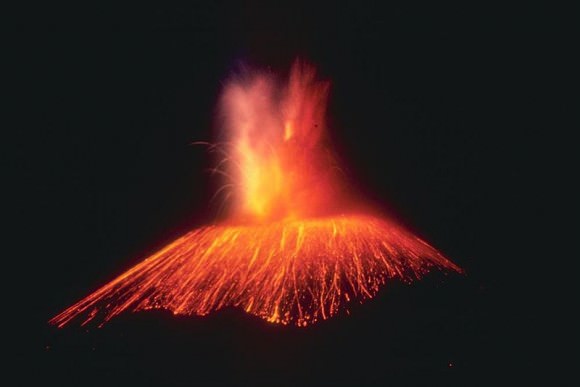
Composite volcanoes (aka. stratovolcanoes) are formed when a volcano conduit connects a subsurface magma reservoir to the Earth’s surface. These volcanoes typically have several vents that cause magma to break through the walls and spew from fissures on the sides of the mountain as well as the summit.
These volcanoes are known for causing violent eruptions. And thanks to all this ejected material, these volcanoes can grow up to thousands of meters tall. Examples include Mount Rainier (4,392 m; 14,411 ft), Mount Fuji (3,776 m; 12,389 ft), Mount Cotopaxi (5,897 m; 19,347 ft) and Mount Saint Helens (2,549 mm; 8,363 ft).
Shield volcanoes are so-named because of their large, broad surfaces. With these types of volcanoes, the lava that pours forth is thin, allowing it to travel great distances down the shallow slopes. This lava cools and builds up slowly over time, with hundreds of eruptions creating many layers. They are therefore not likely to be catastrophic. Some of the best known examples are those that make up the Hawaiian Islands, especially Mauna Loa and Mauna Kea.
Volcanic or lava domes are created by small masses of lava which are too viscous to flow very far. Unlike shield volcanoes, which have low-viscosity lava, the slow-moving lava simply piles up over the vent. The dome grows by expansion over time, and the mountain forms from material spilling off the sides of the growing dome. Lava domes can explode violently, releasing a huge amount of hot rock and ash.
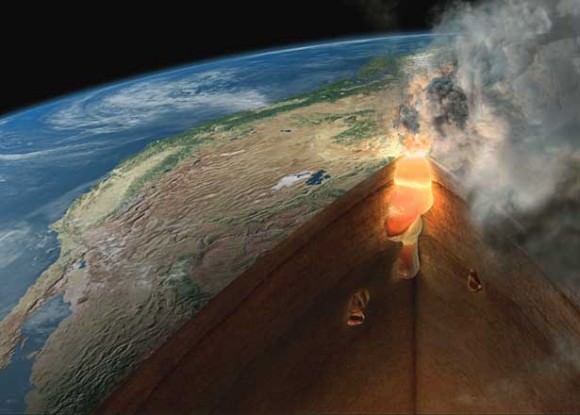
Volcanoes can also be found on the ocean floor, known as submarine volcanoes. These are often revealed through the presence of blasting steam and rocky debris above the ocean’s surface, though the pressure of the ocean’s water can often prevent an explosive release.
In these cases, lava cools quickly on contact with ocean water, and forms pillow-shaped masses on the ocean floor (called pillow lava). Hydrothermal vents are also common around submarine volcano, which can support active and peculiar ecosystems because of the energy, gases and minerals they release. Over time, the formations created by submarine volcanoes may become so large that they become islands.
Volcanoes can also developed under icecaps, which are known as subglacial volcanoes. In these cases, flat lava flows on top of pillow lava, which results from lava quickly cooling upon contact with ice. When the icecap melts, the lava on top collapses, leaving a flat-topped mountain. Very good examples of this type of volcano can be seen in Iceland and British Columbia, Canada.
Examples on Other Planets:
Volcanoes can be found on many bodies within the Solar System. Examples include Jupiter’s moon Io, which periodically experiences volcanic eruptions that reach up to 500 km (300 mi) into space. This volcanic activity is caused by friction or tidal dissipation produced in Io’s interior, which is responsible for melting a significant amount of Io’s mantle and core.
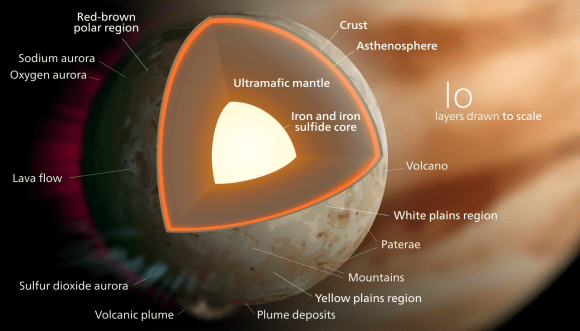
It’s colorful surface (orange, yellow, green, white/grey, etc.) shows the presence of sulfuric and silicate compounds, which were clearly deposited by volcanic eruptions. The lack of impact craters on its surface, which is uncommon on a Jovian moon, is also indicative of surface renewal.
Mars has also experienced intense volcanic activity in its past, as evidenced by Olympus Mons – the largest volcano in the Solar System. While most of its volcanic mountains are extinct and collapsed, the Mars Express spacecraft observed evidence of more recent volcanic activity, suggesting that Mars may still be geologically active.
Much of Venus’ surface has been shaped by volcanic activity as well. While Venus has several times the number of Earth’s volcanoes, they were believed to all be extinct. However, there is a multitude of evidence that suggests that there may still be active volcanoes on Venus which contribute to its dense atmosphere and runaway Greenhouse Effect.
For instance, during the 1970s, multiple Soviet Venera missions conducted surveys of Venus. These missions obtained evidence of thunder and lightning within the atmosphere, which may have been the result of volcanic ash interacting with the atmosphere. Similar evidence was gathered by the ESA’s Venus Express probe in 2007.

This same mission observed transient localized infrared hot spots on the surface of Venus in 2008 and 2009, specifically in the rift zone Ganis Chasma – near the shield volcano Maat Mons. The Magellan probe also noted evidence of volcanic activity from this mountain during its mission in the early 1990s, using radar-sounding to detect ash flows near the summit.
Cryovolcanism:
In addition to “hot volcanoes” that spew molten rock, there are also cryovolcanoes (aka. “cold volcanoes”). These types of volcanoes involve volatile compounds – i.e. water, methane and ammonia – instead of lava breaking through the surface. They have been observed on icy bodies in the Solar System where liquid erupts from ocean’s hidden in the moon’s interior.
For instance, Jupiter’s moon Europa, which is known to have an interior ocean, is believed to experiences cryovolcanism. The earliest evidence for this had to do with its smooth and young surface, which points towards endogenic resurfacing and renewal. Much like hot magma, water and volatiles erupt onto the surface where they then freeze to cover up impact craters and other features.
In addition, plumes of water were observed in 2012 and again in 2016 using the Hubble Space Telescope. These intermittent plumes were observed on both occasions to be coming in the southern region of Europa, and were estimated to be reach up to 200 km (125 miles) before depositing water ice and material back onto the surface.
In 2005, the Cassini-Huygens mission detected evidence of cryovolcanism on Saturn’s moons Titan and Enceladus. In the former case, the probe used infrared imaging to penetrate Titan’s dense clouds and detect signs of a 30 km (18.64 mi) formation, which was believed to be caused by the upwelling of hydrocarbon ices beneath the surface.
On Enceladus, cryovolcanic activity has been confirmed by observing plumes of water and organic molecules being ejected from the moon’s south pole. These plumes are are thought to have originated from the moon’s interior ocean, and are composed mostly of water vapor, molecular nitrogen, and volatiles (such as methane, carbon dioxide and other hydrocarbons).
In 1989, the Voyager 2 spacecraft observed cryovolcanoes ejecting plumes of water ammonia and nitrogen gas on Neptune’s moon Triton. These nitrogen geysers were observed sending plumes of liquid nitrogen 8 km (5 mi) above the surface of the moon. The surface is also quite young, which was seen as indication of endogenic resurfacing. It is also theorized that cryovolcanism may also be present on the Kuiper Belt Object Quaoar.
Here on Earth, volcanism takes the form of hot magma being pushed up through the Earth’s silicate crust due to convention in the interior. However, this kind of activity is present on all planet that formed from silicate material and minerals, and where geological activity or tidal stresses are known to exist. But on other bodies, it consists of cold water and materials from the interior ocean being forced through to the icy surface.
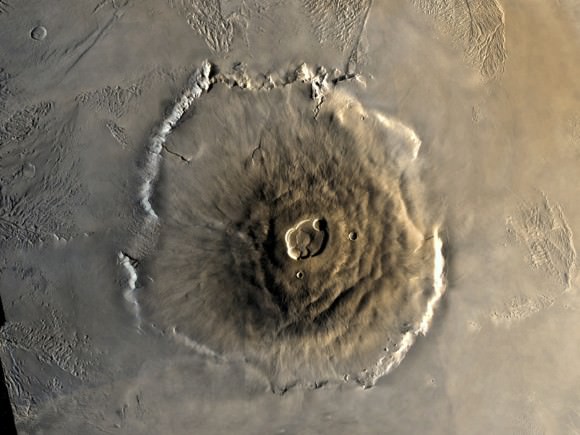
Today, our knowledge of volcanism (and the different forms it can take) is the result of improvements in both the field of geology, as well as space exploration. The more we learn of about other planets, the more we are able to see startling similarities and contrasts with our own (and vice versa).
We have written many interesting articles about volcanoes here at Universe Today. Here’s 10 Interesting Facts About Volcanoes, What are the Different Types of Volcanoes?, How Do Volcanoes Erupt?, What Are The Benefits Of Volcanoes?, What is the Difference Between Active and Dormant Volcanoes?
For more information, be sure to check out What is a Volcano? at NASA Space Place.
Astronomy Cast has an episode on the subject – Episode 141: Volcanoes Hot and Cold.
Sources:

